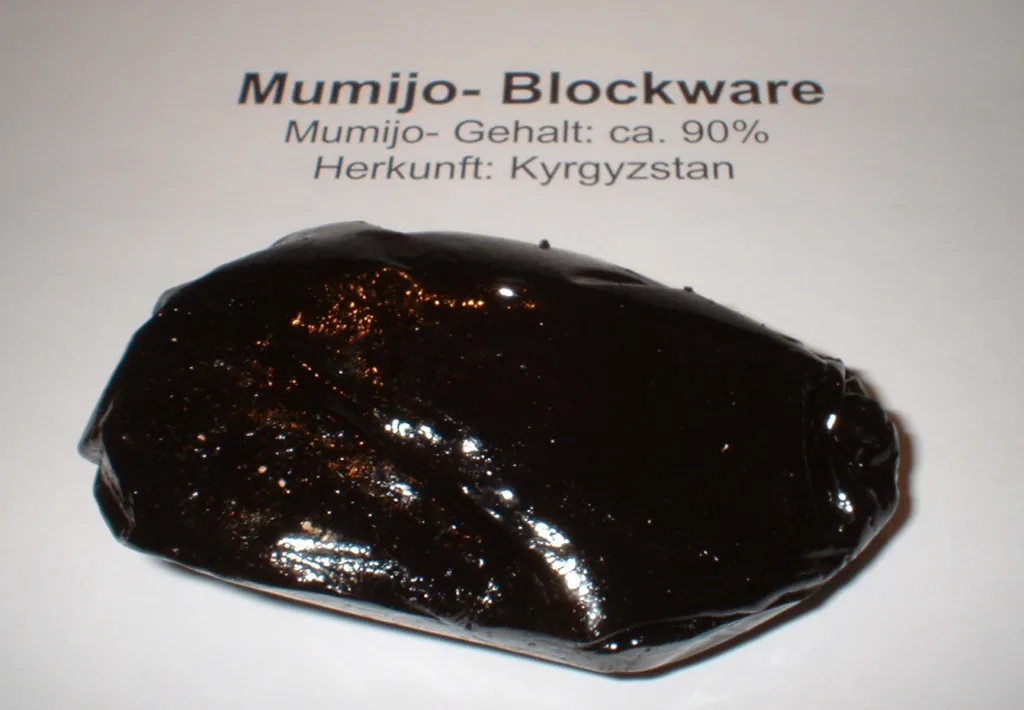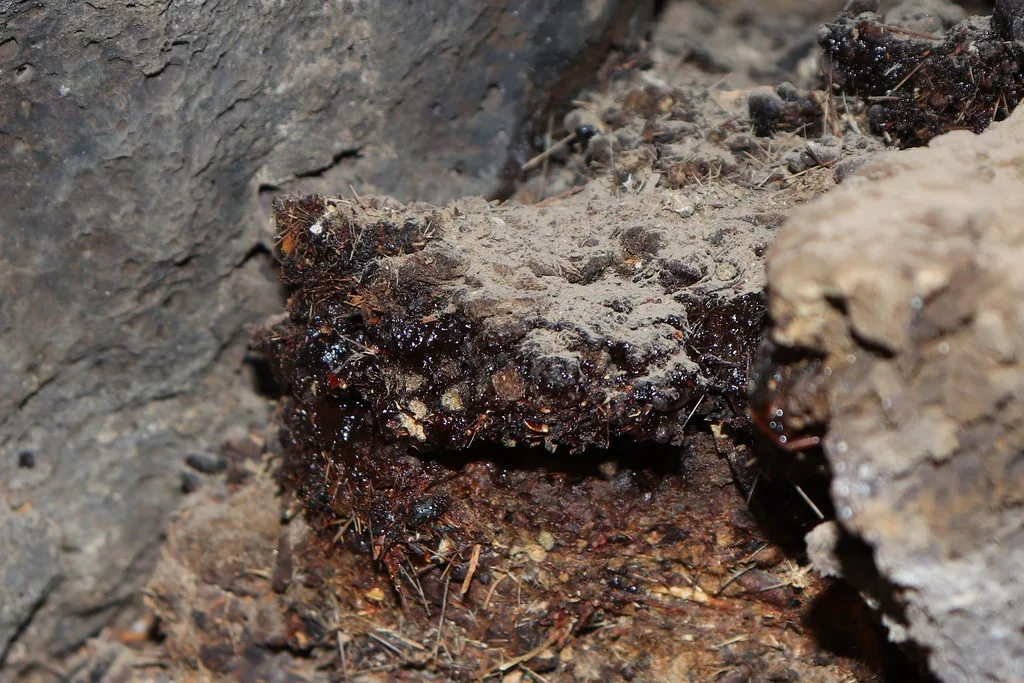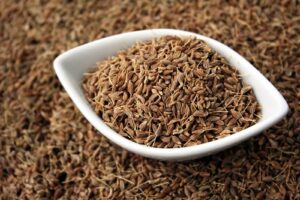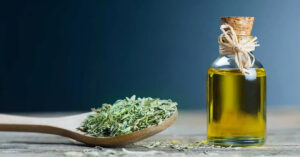
Shilajit, is known by various names, the literal meaning being Conqueror of Mountain as ‘shila’ means mountain an ‘jit’ means conqueror. It is also known as the “destroyer of weakness” in Sanskrit, and ‘Mumijo’ or Mumie’ in urdu . It is a natural substance that has been used for centuries across the world especially in Ayurvedic medicine.

It is a blackish-brown sticky resin that oozes out from the rocks of the Himalayas during the summer months.
Origins and Discovery of Shilajit
Shilajit has been used for centuries in Ayurvedic medicine and is considered a gift from the Himalayas. The origins of Shilajit can be traced back to ancient Indian texts such as the Charaka Samhita and Sushruta Samhita, which are among the oldest medical texts in the world.
According to these texts, shilajit was considered a powerful rejuvenator and was used to treat various ailments and improve overall health. It was believed to have the ability to increase strength, vitality, and longevity.
The discovery of shilajit is often attributed to the legendary Himalayan yogis who observed the behavior of monkeys. These yogis noticed that monkeys would chew on the blackish-brown resin that oozes out from the rocks and observed the monkeys’ vitality and strength. Inspired by this observation, the yogis began using shilajit themselves and recognized its numerous health benefits.
Historical References
Shilajit, the enigmatic resin from the Himalayas, has woven its way through history, enchanting healers and seekers for millennia. Its tale isn’t just a scientific one, but a tapestry woven with the threads of prominent figures who whispered of its transformative power. Let’s embark on a journey through time, unearthing the echoes of Shilajit’s use by notable individuals, as inscribed in various historical texts.

Ayurveda’s Elixirs of Life:
In the ancient Ayurvedic texts, dating back to 1500-500 BCE, Shilajit isn’t just mentioned, it’s revered. As a “Rasayana,” it promised vitality, longevity, and even a spark of the divine. While attributing its use to specific emperors like Ashoka or Harshavardhana lacks direct evidence, the texts themselves paint a vibrant picture of its esteemed place in Ayurvedic practices.
Whispers Across Continents:
The whispers of Shilajit transcend geographical boundaries. In 1st century AD Rome, Pliny the Elder’s Naturalis Historia mentions a substance called “Sil,” believed to be Shilajit, valued for its invigorating and healing properties. Legends swirl around Cleopatra’s famed beauty regime, with some speculating about the potential involvement of this potent elixir.
Tibetan Treasures of Healing:
Across the Himalayas, Tibetan medicine embraced Shilajit as a “Mumijo,” a precious life essence. The Four Medical Tantras sing its praises as a remedy for a vast array of ailments, from fatigue and altitude sickness to kidney disorders and even arthritis. Renowned masters like Milarepa might have found solace in its restorative powers during their arduous spiritual journeys, though direct historical references are crucial to avoid speculation.
Modern Champions Emerge:
Fast forward to the 20th century, and we find renowned figures like Nikola Tesla, the visionary inventor, intrigued by Shilajit’s potential. While directly crediting it for his specific achievements lacks concrete evidence, his interest adds to the growing chorus of fascination with this ancient wonder. Russian biochemist Alexander Zasyadko’s extensive research on its adaptogenic and immunomodulatory properties further cements its scientific intrigue.
A Legacy Unfolding:
These mere glimpses offer a captivating glimpse into the rich tapestry of Shilajit’s historical allure. From emperors seeking longevity to mystics searching for enlightenment, this potent elixir has resonated with diverse individuals across time and cultures. As scientific research continues to unveil its potential, Shilajit’s legacy is poised to unfold in even more fascinating chapters.
Where is Shilajit Found?
Shilajit is primarily found in the rocky regions of the Himalayas, spanning countries such as India, Nepal, Bhutan, and Tibet. It can be found at altitudes ranging from 1000 to 5000 meters above sea level.
The specific regions where shilajit is found include the Himalayan mountain ranges in Uttarakhand and Himachal Pradesh in India, as well as the Tibetan Plateau in Tibet. The pristine environment and unique geological conditions in these areas contribute to the formation of high-quality shilajit.
How is Shilajit Made?
The formation of shilajit is an intricate process that takes hundreds of years. It starts with the decomposition of plant matter that gets trapped in the rocks and crevices of the Himalayan mountains.
Over time, due to the pressure exerted by the mountains and the geological processes involved, this plant matter undergoes a transformation. Under high pressure and temperature conditions, it is transformed into a sticky resin-like substance known as shilajit.
During the summer months when the temperature rises, the shilajit oozes out from the rocks and can be collected for use.
How is Shilajit extracted?
High in the Himalayas, hidden in cracks of the rocks, sleeps a special goo called Shilajit. When spring brings warmth, this golden treasure wakes up and starts to ooze out, like honey from the mountains. People who know all about Shilajit carefully collect it, sometimes scraping it off the rocks, sometimes letting it flow down special channels they build. Then, like making sunshine tea, they dry it in the sun and wash it with clean water. After that, they filter it carefully, taking out any bits and pieces they don’t want. Finally, what’s left is pure Shilajit, ready to be used for all sorts of good things!
Different Types of Shilajit
There are several types of shilajit available in the market, each with its own unique characteristics and properties. The following are the main types:
Raw Shilajit : has various impurities and is in the form as it exists in nature. It might not be fit for direct consumption and needs to be processed and filtered
Processed Shilajit : is the one that has undergone the process of filtration and is fit for human consumption.
Liquid Shilajit: Liquid shilajit is a concentrated form of shilajit that has been dissolved in water or other liquids for easier consumption.
Powdered Shilajit: Powdered shilajit is obtained by drying and grinding raw or processed shilajit into a fine powder form. It is often encapsulated or mixed with other ingredients for convenience.
It’s important to note that the quality and authenticity of shilajit can vary greatly depending on its source and production methods. It is advisable to choose reputable brands or sources that provide lab-tested shilajit.
Composition of Shilajit
Shilajit is a complex substance that contains a wide range of bioactive compounds. Its composition can vary depending on factors such as geographical location, altitude, and processing methods. However, some common components found in shilajit include:
Fulvic Acid: Fulvic acid is one of the key components of shilajit and is responsible for many of its health benefits. It acts as a potent antioxidant and helps in detoxification and nutrient absorption.
Humic Acid: Humic acid is another important component found in shilajit. It has anti-inflammatory properties and supports overall immune health.
Dibenzo-alpha-pyrones: These compounds have been found to have antioxidant, anti-inflammatory, and neuroprotective effects.
Trace Minerals: Shilajit contains various trace minerals such as iron, calcium, magnesium, potassium, zinc, and copper that are essential for maintaining optimal health.
Amino Acids: Shilajit also contains a range of amino acids that are crucial for protein synthesis and various metabolic processes in the body.
The unique combination of these bioactive compounds contributes to the overall health benefits associated with shilajit consumption.
World Production and Availability
Shilajit production is primarily concentrated in the Himalayan regions of India, Nepal, Bhutan, and Tibet. However, due to its increasing popularity worldwide, shilajit is now being produced in other countries as well.
India is one of the largest producers of shilajit globally, with regions like Uttarakhand and Himachal Pradesh being major contributors. Nepal also has significant shilajit production, particularly in the regions bordering India.
Shilajit availability varies depending on factors such as seasonal variations, collection methods, and demand. It can be found in various forms such as raw resin, processed resin, liquid extracts, capsules, or powdered form.
Shilajit is also found in other countries such as Russia, Chile etc. especially the ones with high mountain terrain and is known by different names.
When purchasing shilajit, it’s important to choose reliable sources that provide authentic products and conduct quality testing to ensure purity and efficacy.
Benefits of Shilajit
Shilajit has gained popularity worldwide due to its numerous health benefits. Let’s explore some of the key benefits associated with its consumption:
i. Boosts Energy and Stamina
Shilajit has adaptogenic properties that help improve physical endurance and energy levels. It supports mitochondrial function and enhances ATP production, which is responsible for providing energy to cells.
ii. Enhances Cognitive Function
The bioactive compounds present in shilajit have been shown to support brain health and cognitive function. It helps improve clarity of mind, fosters memory and improves analytical skills.
iii. Supports Immune System
Shilajit contains antioxidants that help protect against oxidative stress and boost immune function. It stimulates the production of immune cells and enhances their activity against pathogens.
iv. Promotes Anti-Aging Effects
The antioxidants present in it help neutralize free radicals and reduce oxidative damage to cells. This may slow down the aging process and promote healthy aging.
v. Supports Male Sexual Health
It has been traditionally used as an aphrodisiac and is believed to enhance male sexual health by improving testosterone levels, sperm quality, and fertility.
vi. Improves Nutrient Absorption
The fulvic acid present in shilajit helps improve nutrient absorption by enhancing digestion and supporting gut health.
vii. Supports Joint Health
Shilajit’s anti-inflammatory properties may help reduce joint pain and inflammation associated with conditions like arthritis.
viii. Aids in Detoxification
Shilajit’s detoxifying properties help eliminate toxins from the body and support liver function.
These are just a few examples of the many potential benefits that shilajit offers. However, it’s important to note that individual results may vary, and consultation with a healthcare professional is advised before incorporating shilajit into your routine.
Appropriate Dosage of Shilajit
The appropriate dosage of shilajit can vary depending on factors such as age, overall health condition, and desired outcomes. You should not jump to higher dosage but start out on a lower dosage and gradually move to higher dosage.
Typically, a dosage range of 300-500 mg per day is considered safe for most individuals. However, it’s important to follow the manufacturer’s instructions or consult with a healthcare professional for personalized dosage recommendations.
It’s worth mentioning that shilajit should not be taken in excessive amounts as it may lead to undesirable effects or interactions with medications.
Different Ways to Consume Shilajit
Shilajit can be consumed in various ways to suit individual preferences. Some common methods include:
• Direct Consumption: Raw or processed shilajit can be dissolved under the tongue or swallowed directly with water or any beverage.
• Liquid Extracts: Shilajit can be mixed with water or other liquids such as herbal teas or smoothies for easier consumption.
• Capsules or Tablets: Shilajit is available in capsule or tablet form for convenient dosage control.
• Powdered Form: Powdered shilajit can be mixed with foods or beverages for easy incorporation into daily routines.
It’s important to note that shilajit has a strong taste that may not be appealing to everyone. Mixing it with honey or other natural sweeteners can help mask the taste.
How to Obtain Shilajit
Obtaining authentic shilajit can sometimes be challenging due to counterfeit products or low-quality imitations flooding the market. To ensure you are purchasing genuine shilajit:
1. Choose Reputable Brands: Look for brands that have a good reputation for sourcing high-quality shilajit from reliable suppliers.
2. Check Certifications: Look for certifications such as GMP (Good Manufacturing Practice) or organic certifications.
3. Read Reviews: Check customer reviews and testimonials to get an idea of other people’s experiences with the product.
4. Lab Testing: Ensure that the product has undergone third-party lab testing for purity and potency.
5. Packaging: Authentic shilajit is typically packaged in glass containers or high-quality plastic containers that protect it from sunlight and moisture.
6. Cost: Be cautious if the price seems too good to be true; genuine shilajit is a rare substance and comes at a cost.
By following these guidelines, you can increase your chances of obtaining genuine high-quality shilajit.
Possible Side Effects and Precautions
While shilajit is generally considered safe for most individuals when consumed within appropriate dosage limits, it’s important to be aware of potential side effects and take necessary precautions:
• Allergic Reactions: Some individuals may be allergic to shilajit or specific components present in it. If you experience any allergic symptoms such as itching, swelling, or difficulty breathing after consuming shilajit, discontinue use immediately and seek medical attention.
• Heavy Metal Contamination: Since shilajit is sourced from natural rock formations, there is a possibility of heavy metal contamination if proper quality control measures are not followed during production or processing.
• Medication Interactions: If you are taking any medications or have underlying health conditions, it’s advisable to consult with a healthcare professional before incorporating shilajit into your routine.
• Pregnancy and Breastfeeding: There is limited research on the safety of shilajit during pregnancy or breastfeeding periods. It’s best to avoid using it during these times unless directed by a healthcare professional.
It’s always recommended to start with small doses when introducing any new supplement into your routine to gauge individual tolerance.
Frequently Asked Questions (FAQs)
Q1: Is shilajit safe for long-term use?
A1: Shilajit is generally considered safe for long-term use when consumed within recommended dosage limits. However, it’s advisable to take breaks periodically to assess whether continued use is still beneficial for your specific needs.
Q2: Can women use shilajit?
A2: Yes, women can also benefit from using shilajit; however, it’s important to consider individual health conditions and consult with a healthcare professional before incorporating it into their routine.
Q3: Can I take shilajit if I have diabetes?
A3: If you have diabetes or any other underlying health condition, it’s advisable to consult with a healthcare professional before taking shilajit as it may interact with certain medications or affect blood sugar levels.
Q4: Can I consume alcohol while taking shilajit?
A4: It’s generally recommended to avoid consuming alcohol while taking any herbal supplements including shilajit as alcohol may interfere with its absorption or enhance potential side effects.
Q5: Can children use shilajit?
A5: Shilajit is not recommended for children unless under the guidance of a healthcare professional who can determine appropriate dosage based on individual needs.
Q6: Can I take shilajit on an empty stomach?
A6: While there are no strict rules regarding timing, taking shilajit with food may help improve absorption and reduce potential stomach discomfort.
Q7: Can I take multiple supplements along with shilajit?
A7: While many supplements can be taken alongside shilajit without any issues, it’s advisable to consult with a healthcare professional before combining multiple supplements to avoid potential interactions or excessive nutrient intake.
Q8: How long does it take to experience the benefits of shilajit?
A8: The time taken to experience noticeable benefits from shilajit can vary depending on individual factors such as overall health condition, dosage, consistency of use, etc. Some individuals may experience benefits within a few weeks while others may take longer.
Q9: How should I store shilajit?
A9: Shilajit should be stored in a cool and dry place away from direct sunlight or heat sources to maintain its potency and quality over time.
Q10: Can I overdose on shijalait?
A10: While consuming slightly higher doses than recommended may not cause immediate harm, it’s advisable to stick within the recommended dosage range as excessive intake may lead to undesirable effects or interactions with medications.
Reference : http://www.wikipedia.com







